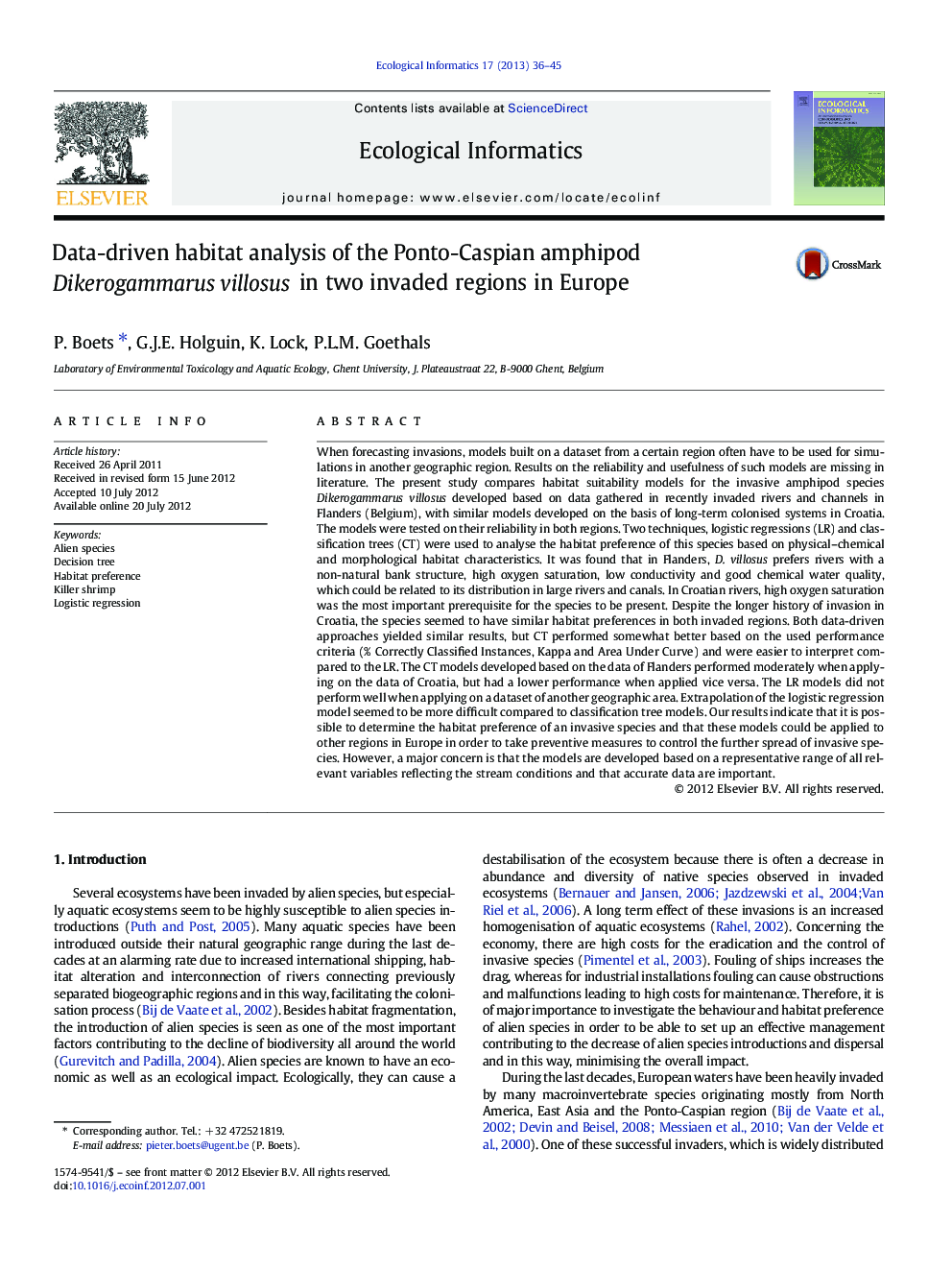| کد مقاله | کد نشریه | سال انتشار | مقاله انگلیسی | نسخه تمام متن |
|---|---|---|---|---|
| 4374962 | 1617215 | 2013 | 10 صفحه PDF | دانلود رایگان |
عنوان انگلیسی مقاله ISI
Data-driven habitat analysis of the Ponto-Caspian amphipod Dikerogammarus villosus in two invaded regions in Europe
دانلود مقاله + سفارش ترجمه
دانلود مقاله ISI انگلیسی
رایگان برای ایرانیان
کلمات کلیدی
موضوعات مرتبط
علوم زیستی و بیوفناوری
علوم کشاورزی و بیولوژیک
بوم شناسی، تکامل، رفتار و سامانه شناسی
پیش نمایش صفحه اول مقاله

چکیده انگلیسی
When forecasting invasions, models built on a dataset from a certain region often have to be used for simulations in another geographic region. Results on the reliability and usefulness of such models are missing in literature. The present study compares habitat suitability models for the invasive amphipod species Dikerogammarus villosus developed based on data gathered in recently invaded rivers and channels in Flanders (Belgium), with similar models developed on the basis of long-term colonised systems in Croatia. The models were tested on their reliability in both regions. Two techniques, logistic regressions (LR) and classification trees (CT) were used to analyse the habitat preference of this species based on physical-chemical and morphological habitat characteristics. It was found that in Flanders, D. villosus prefers rivers with a non-natural bank structure, high oxygen saturation, low conductivity and good chemical water quality, which could be related to its distribution in large rivers and canals. In Croatian rivers, high oxygen saturation was the most important prerequisite for the species to be present. Despite the longer history of invasion in Croatia, the species seemed to have similar habitat preferences in both invaded regions. Both data-driven approaches yielded similar results, but CT performed somewhat better based on the used performance criteria (% Correctly Classified Instances, Kappa and Area Under Curve) and were easier to interpret compared to the LR. The CT models developed based on the data of Flanders performed moderately when applying on the data of Croatia, but had a lower performance when applied vice versa. The LR models did not perform well when applying on a dataset of another geographic area. Extrapolation of the logistic regression model seemed to be more difficult compared to classification tree models. Our results indicate that it is possible to determine the habitat preference of an invasive species and that these models could be applied to other regions in Europe in order to take preventive measures to control the further spread of invasive species. However, a major concern is that the models are developed based on a representative range of all relevant variables reflecting the stream conditions and that accurate data are important.
ناشر
Database: Elsevier - ScienceDirect (ساینس دایرکت)
Journal: Ecological Informatics - Volume 17, September 2013, Pages 36-45
Journal: Ecological Informatics - Volume 17, September 2013, Pages 36-45
نویسندگان
P. Boets, G.J.E. Holguin, K. Lock, P.L.M. Goethals,